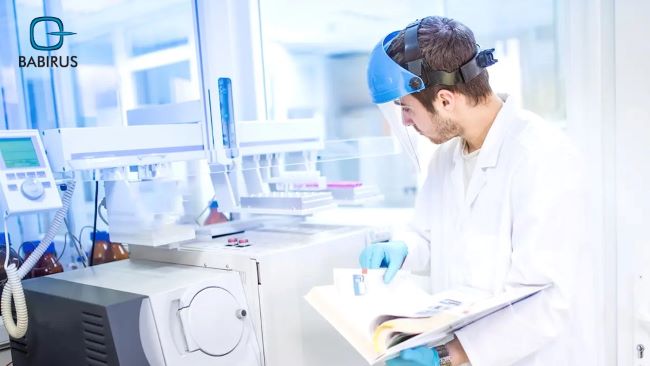The 12 Most Important Aspects of Hospital Equipment Planning

The process of hospital equipment planning and choosing must go through an accurate and well-studied process not only to meet the healthcare facility’s needs, budget, and safety standards but also to guarantee achieving the best investment from the process.
Moreover, the hospital equipment planning process directly impacts the quality of offered patient care and the efficiency of healthcare delivery, with all the chosen tools and devices.
In this article, we are going to share with you full information about hospital equipment planning, including financing.
Understanding Hospital Needs:
Before starting any hospital equipment planning you need to evaluate and assess your facility requirement based on the size of your facility and quality of delivered service.
Thus, we are going to share with you the main steps that you need to follow to understand your hospital needs and set a successful hospital equipment planning:
1- Patient Population:
Know the area you are serving by studying and analyzing the demographics and healthcare needs of the patient population in the targeted area, which will help you greatly set a successful hospital equipment planning strategy.
Think of this point from this perspective, by understanding the patient population, hospitals can adjust their equipment choices to deliver efficient and high-quality medical services.
2- Focus Areas and Services:
You should not compare the required equipment for a hospital specialized in pediatric with another one specialized in geriatric care, thus, the hospital equipment planning must be based on clear identification of the specialized departments and offered services.
As the needed equipment and devices for a hospital with an advanced cardiac care unit will include quality cardiovascular diagnostic tools, that will not be the same in a small facility.
3- Current Equipment Inventory:
When doing your hospital equipment planning and to make an informed decision, you must consider your facility’s existing equipment and its specifications, whether there is a possibility to upgrade or you will need a replacement based on their functionality and your medical center needs.
Moreover, you must ensure that the new equipment complements the existing setup to achieve a good improvement and upgrade your delivered services.
Planning for Functionality and Efficiency:
The functionality and efficiency of the used equipment are the main factors in your workflow effectiveness as they directly integrate with your work system, therefore your equipment planning process must consider these points:
4- Technology Integration:
So, when you buy new hospital equipment, you will need them to work and be compatible with existing hospital devices and IT systems to actually benefit from this new investment.
Moreover, hospital equipment planning must take into consideration future technological advancements, not only to prevent costly upgrades but also to avoid the need for direct costly replacements.
5- Ease of Use:
The installation of user-friendly equipment minimizes required training time and boosts efficiency among healthcare professionals.
Additionally, with the user-friendly interfaces and intuitive controls, your staff’s daily work will be more efficient with lower error possibilities.
6- Maintenance and Service:
Ensuring constant and regular maintenance processes guarantee continuous service availability, and help you avoid potential downtime.
In Dubai, you can easily get professional maintenance services from leading service providers like Babirus Medical Equipment to extend the equipment’s lifespan and ensure consistent performance.
Financial Considerations and Budgeting:
Just as with any provided service, budgeting is a crucial aspect of hospital equipment planning, thus, careful financial planning is required to get the best equipment with a good investment.
7- Cost-Effectiveness:
When talking about the cost of medical equipment, you need to consider the initial purchase price, required ongoing maintenance, and operational costs to identify the cost-effectiveness level of that tool.
Furthermore, cost-effectiveness in hospital equipment planning involves looking at the big picture and understanding the total cost of ownership, as simply sometimes, a higher upfront cost can lead to long-term savings.
8- Return on Investment (ROI):
Hospitals only buy new equipment and devices to improve the delivered patient care services, operational efficiency, diagnostic accuracy, and treatment outcomes.
Thus, in medical terms, a good ROI means that the equipment pays for itself over time through better patient outcomes and operational efficiencies.
9- Funding Options:
There are various funding options to explore for equipment acquisition, such as capital expenditure budgets, grants, or leasing arrangements, that can provide financial flexibility, however, before choosing you need to understand the pros and cons of each option.
Moreover, the availability of different funding sources can make acquiring necessary equipment more possible while ensuring financial stability and resource optimization.
Safety and Regulatory Compliance:
Patient and staff safety should be a top priority when planning for hospital equipment, and that could be done by meeting regulatory standards for each device to improve the quality of care.
10- Safety Features:
You need to choose equipment with effective and real built-in safety features that actually minimize risks associated with usage, and that is crucial for maintaining a safe environment for both patients and staff.
Safety features like automatic shut-offs, alarms, and ergonomic designs can prevent accidents and injuries.
11- Regulatory Compliance:
There are standard and international safety and performance regulations, like ISO, CE, and FDA, set by governing healthcare bodies that are non-negotiable in all healthcare facilities despite their size.
Moreover, healthcare regulatory compliance will ensure safety and effectiveness in all medical examinations and processes.
12- Training and Staff Competency:
When planning to get new hospital equipment, you must provide proper training for your working team to ensure their safety and the effectiveness of the working process.
This could be done through training sessions and competency assessments to get the best out of the newly installed devices and tools.
Lastly,
Although the effective hospital equipment planning process needs to go in several steps, yet, once done correctly it will come back to you with amazing benefits, including patient care, functionality, and budget efficiency.
Thus, make sure to partner with a reliable medical supplier, who will provide you with advanced services, full support, and professional maintenance, contact us now and get the best available medical equipment.

